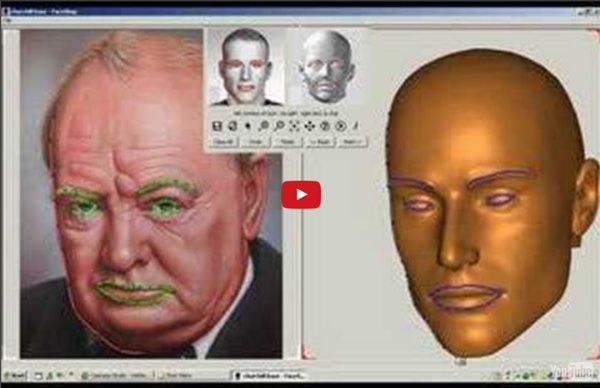



Advances in Real-Time Rendering in 3D Graphics and Games - SIGGRAPH 2010 Advances in the real-time graphics research and the ever-increasing power of mainstream GPUs and consoles continues generating an explosion of innovative algorithms suitable for fast, interactive rendering of complex and engaging virtual worlds. Every year the latest video games display a vast variety of sophisticated algorithms resulting in ground-breaking 3D rendering pushing the visual boundaries and interactive experience of rich environments. The focus of this course lies in bridging the game development community and the state-of-the-art 3D graphics research, encouraging cross-pollination of knowledge for future games and other interactive applications. This course is the next installment in the now-established series of Siggraph courses on real-time rendering, bringing the newest and best of graphics practices and research from the game development community, and providing practical and production-proven algorithms.
The Teachable Agents Group @ Vanderbilt University EMBOTS: Embodied Agents Research Group VirtualConstructor (COHIBIT) At Volkwagen's Autostadt in Wolfsburg, two virtual characters, Jara and Taron, invite visitors to build model cars with real car pieces. Using camera and RFID technology for input, the two characters seamlessly interact with the real world. They are controlled using statecharts, modelled in our Scenemaker tool. The project was also presented at CeBIT-07. A cooperation with Augsburg University, Charamel and Autostadt. Researchers: Alassane Ndiaye, Patrick Gebhard, Michael Kipp, Martin Rumpler, Michael Schneider, Gernot Gebhard. DFKI project website Autostadt exhibit website Publications: Kipp, M., Kipp, K.H., Ndiaye, A. and Gebhard, P. (2006) Evaluating the Tangible Interface and Virtual Characters in the Interactive COHIBIT Exhibit In: Proceedings of the 6th International Conference on Intelligent Virtual Agents (IVA 2006), Springer, pp. 434-444.
Modeller: 3D Face Generator 3D face modelling software for Windows. Create faces from one or more photographs, or at random. Edit faces in over 150 ways, including race, age and gender. Choose between different mesh structures and UV layouts. Export to most 3D file formats, complete with animation morphs. Overview Features Resources Evaluation Purchasing Licensing Legal Overview With our unique statistics-based technology, you can: Create highly realistic or caricatured faces at random from any race, gender and adult age group: Easily create a face from one or more photographs: ... goes to ... Edit faces by just clicking and dragging: Edit faces with over 150 powerful parametric controls, from race morphing the whole face to tweaking the nose shape: ... Apply one of over 50 skin 'detail' textures to the face you've created: Select the mesh and UV layout of your choice (or use your own with the Customizer): Instantly apply animation morphs and accessory models: Export your texture maps to JPEG, BMP, TGA or TIFF. Resources Legal
OC3 Entertainment FaceFX is OC3 Entertainment’s cutting edge solution for creating realistic facial animation from audio files. FaceFX is the culmination of years of experience working with lip-synchronization, 3D graphics, and facial animation. The product makes it easy to batch process thousands of audio files for your game, add expressions to a single animation without ruining the lip-synchronization, tweak an animation to perfection, or integrate the entire solution into your art pipeline. FaceFX Unlimited for Game Developers FaceFX technology has been used in the development of over 150 triple-A game titles. Full source code to FaceFX Studio Unlimited gives developers the flexibility they need to integrate the solution with their development pipeline, with full batch processing capabilities. Learn More > FaceFX Professional for Animators Creating high quality facial animation is an art form, and FaceFX Studio Professional is a tool for artists. Buy FaceFX
Avatars - Create an Animated Talking Character for Your Website The Rigged Avatar File One of the best features about this rig is that all of the inverse kinematics have been worked out in advance. This means that when you move the foot controller around, the rest of the leg follows...and bends in much the same way a human leg would bend. This is true for the arms, spine and neck as well. When you first open the file, you will notice that only the controllers and mesh are visible. The bones in the avatar skeleton have been hidden on purpose so that it is easier to see what the controllers are doing to the avatar. The controllers themselves can be moved and rotated over time just like any other bone in MAX. Note: The root bone, Female03MasterRoot, should never be animated.
Avatar Morph Animation Morph Names Below is the full list of morph names IMVU uses in its base avatar heads. There are 79 of them. These are the morph names available to you if you want to make a morph animation using the IMVU base avatar heads. See them in all their RED glory: blink.Left.Lower.Clamped blink.Left.Upper.Clamped blink.Right.Lower.Clamped blink.Right.Upper.Clamped blink.Wide.Left.Average blink.Wide.Right.Average eyebrow.Left.Angry.Average eyebrow.Left.Down.Average eyebrows.Left.Center.Up.Average eyebrows.Left.In.Average eyebrows.Left.Mad.Average eyebrows.Left.OuterDown.Average eyebrows.Left.OuterUp.Average eyebrows.Left.Sad.Average eyebrows.Left.Up.Average eyebrow.Right.Angry.Average eyebrow.Right.Down.Average eyebrows.Right.Center.Up.Average eyebrows.Right.In.Average eyebrows.Right.Mad.Average eyebrows.Right.OuterDown.Average eyebrows.Right.OuterUp.Average eyebrows.Right.Sad.Average eyebrows.Right.Up.Average left.Eye.Down.Clamped left.Eye.Left.Clamped left.Eye.Right.Clamped left.Eye.Up.Clamped